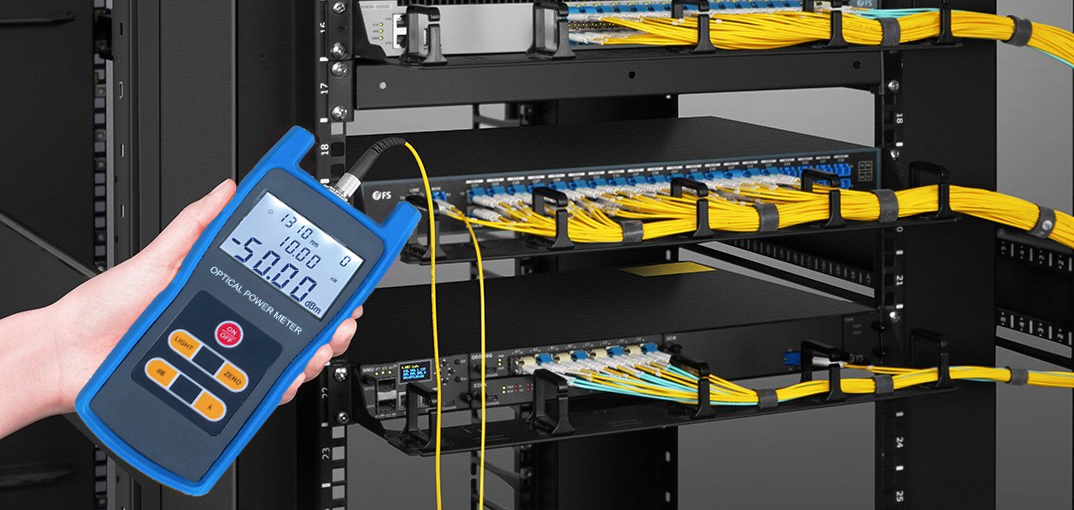Revealing the Trick Uses of Optical Fibre Examining for Efficient Data Transmission
In the realm of modern-day interaction, optical fibre testing arises as an essential practice for maximizing information transmission. Recognizing the diverse applications of optical fibre screening welcomes a deeper expedition right into its critical role in shaping the future of data interaction.

Relevance of Optical Fiber Testing
The relevance of optical fibre testing can not be overemphasized, as it functions as a crucial part in making certain the dependability and efficiency of information transmission systems. In an era where high-speed interaction is extremely important, any type of deficiencies in fiber optics can lead to considerable data loss and minimized performance. Strenuous testing procedures are important to confirm the integrity and efficiency of optical cables.
Checking permits the recognition of issues such as micro-bends, macrobends, and splice losses that can hinder signal quality. In addition, it provides insights right into the total depletion and transmission capacity capacities of the fiber, making certain that the network fulfills particular functional requirements. Normal screening not only enhances system efficiency yet likewise extends the life-span of the framework by determining potential issues prior to they intensify into pricey failings.

Kinds Of Optical Fibre Tests
Numerous types of optical fiber tests are carried out to ensure the performance and integrity of fibre optic networks. These examinations can be categorized right into numerous key kinds, each serving a particular purpose in evaluating the honesty of the fiber.
First, Optical Time Domain Reflectometry (OTDR) is a noticeable test that recognizes faults, mates, and adapters within the fibre. By sending pulses of light and examining the mirrored signals, specialists can determine concerns along the fiber's size.
Second, insertion loss tests examine the quantity of signal loss when light passes through connectors or splices, which is vital for maintaining network efficiency.
Third, return loss tests gauge the amount of light reflected back towards the resource, giving understandings into the quality of connections and potential sources of interference.
Furthermore, connection examinations ensure that the fibre path is complete, allowing service technicians to verify that the fiber is undamaged without any kind of breaks. fibre testing equipment.
Last but not least, visual fault locators use visible light to recognize breaks or severe bends in the fiber, aiding in fast troubleshooting. Collectively, these tests create a comprehensive technique to preserving ideal efficiency in fibre optic networks.

Applications in Network Upkeep
In modern-day telecoms, efficient network maintenance relies greatly on optical fibre testing to recognize and fix problems quickly. Normal screening guarantees that the network operates at optimum efficiency levels, reducing downtime and boosting individual experience.
One of the key applications of optical fiber testing in upkeep is the discovery of mistakes, such as breaks, bends, or improper links. Methods like Optical Time Domain Reflectometry (OTDR) permit service technicians to locate these concerns precisely and assess the quality of the fibre web link. Furthermore, loss screening confirms the integrity of the optical course, guaranteeing that signal attenuation stays within acceptable limitations.
Regular maintenance testing additionally aids in preventative procedures, identifying prospective problems before they rise right into significant failings. This proactive technique can save organizations both time and funds. Moreover, throughout upgrades or expansions, optical fibre screening makes certain that new installments integrate effortlessly with existing framework.
Enhancing Information Transmission Integrity
Reliable network maintenance with optical fibre screening not only addresses instant concerns yet likewise plays a considerable role in improving information transmission integrity. By identifying mistakes, gauging signal loss, and evaluating the total problem of fiber optic cables, testing makes sure that possible troubles are next rectified before they rise into considerable disturbances.
Normal optical fibre testing, such as time-domain reflectometry (TDR) and optical time-domain reflectometry (OTDR), allows service technicians to determine the specific areas of breaks, flexes, or adapter problems within the network. This aggressive approach not just minimizes downtime but also optimizes the performance of information transmission by guaranteeing that the pathways for signals are clear and functioning efficiently.
Furthermore, screening aids in confirming adherence to market standards and specifications, which is important for preserving the stability of data flow. By ensuring that each link fulfills required limits for loss and high quality, organizations can reinforce their confidence in the integrity of their information networks.
Eventually, buying extensive optical fibre screening not just boosts data transmission reliability but additionally sustains the long-term operational efficiency of interaction facilities.
Future Trends in Fiber Screening
Emerging modern technologies are positioned to transform fiber testing, paving the means for improved efficiency and precision in data transmission diagnostics (robotic vision). As the demand for faster internet and greater bandwidth remains to increase, the assimilation of sophisticated tools such as fabricated intelligence (AI) and artificial intelligence (ML) is set to change typical fibre screening methods. These modern technologies will make it possible for predictive maintenance and automated mistake detection, dramatically decreasing downtime and boosting network integrity
Furthermore, the fostering of Internet of Points (IoT) tools will promote real-time tracking of fiber networks, permitting instant recognition of performance issues. This change in the direction of proactive administration will certainly reduce disturbances and optimize data circulation.
Furthermore, advancements in optical time-domain reflectometry (OTDR) and brand-new testing requirements will boost the accuracy of measurements, guaranteeing that information integrity is kept throughout the transmission procedure. The arrival a knockout post of 5G modern technology likewise demands the development of much more advanced fiber screening strategies to support its high-speed requirements.
Final Thought
To conclude, optical fibre testing is necessary for keeping efficient data transmission within communication networks. By employing various testing techniques, such as OTDR and insertion loss tests, potential faults can be recognized and fixed, therefore boosting signal quality and minimizing downtime. Regular testing not only ensures compliance with industry standards but likewise facilitates aggressive upkeep, inevitably adding to the long-lasting visit the site dependability and performance of fibre optic systems. The continued advancement of screening methods will certainly further bolster these capabilities in the future.